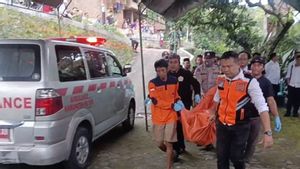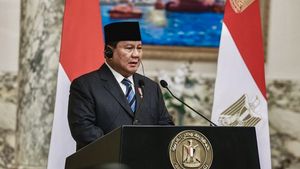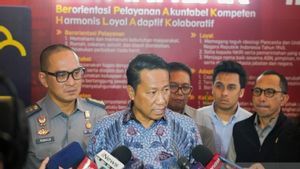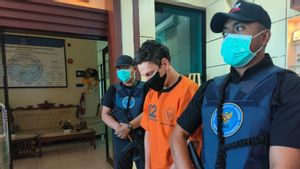JAKARTA - Several areas in Jakarta were flooded on Saturday, July 17 yesterday. Floods occur after rain and rivers overflow. Meanwhile, now has entered the dry season.
The chairman of the PDIP faction of the DKI Jakarta DPRD, Gembong Warsono, said that yesterday's flood proved that the Governor of DKI Jakarta, Anies Baswedan, was not serious in dealing with floods.
"We see that what the Governor has done is strong in words, weak in execution," said Gembong in his statement, Monday, July 18.
Gembong views that at the end of Anies' term of office in his fifth year, a number of flood control programs have not been implemented. In fact, it is included in the DKI Jakarta Regional Medium-Term Development Plan (RPJMD) 2017-2022.
He gave an example, the implementation of river normalization/naturalization is only a polemic in terms of mere terms because the program is still stuck in land acquisition. Then, the infiltration well program has not been proven to cope with floods and puddles.
Therefore, in the remaining three months of Anies' leadership in Jakarta, Gembong urged the former Minister of Education and Culture to move optimally to complete his homework for flood prevention.
"We urge the Governor and the Provincial Government of DKI Jakarta to focus on continuing flood control in Jakarta, normalization and dredging of rivers are mandatory and must be done immediately," he said.
Previously, the DKI Jakarta Regional Disaster Management Agency (BPBD) recorded that as many as 92 RTs in Jakarta were flooded on Saturday, July 16. The floods were spread across 14 sub-districts in South Jakarta, East Jakarta and West Jakarta with water levels reaching 2 meters at several points.
Head of DKI Jakarta BPBD Isnawa Adji said that the temporary analysis of the cause of the rain in Jakarta and the buffer zone was the propagation of wet air masses around the island of Java due to atmospheric waves such as Rossby waves and Kelvin waves.
In addition, there is an intake of wet air mass from the Indian Ocean due to the active Dipole Mode Index (IOD). "The local factor that influences is the presence of wind confluence areas around the southern part of West Java," Isnawa said.
The English, Chinese, Japanese, Arabic, and French versions are automatically generated by the AI. So there may still be inaccuracies in translating, please always see Indonesian as our main language. (system supported by DigitalSiber.id)













